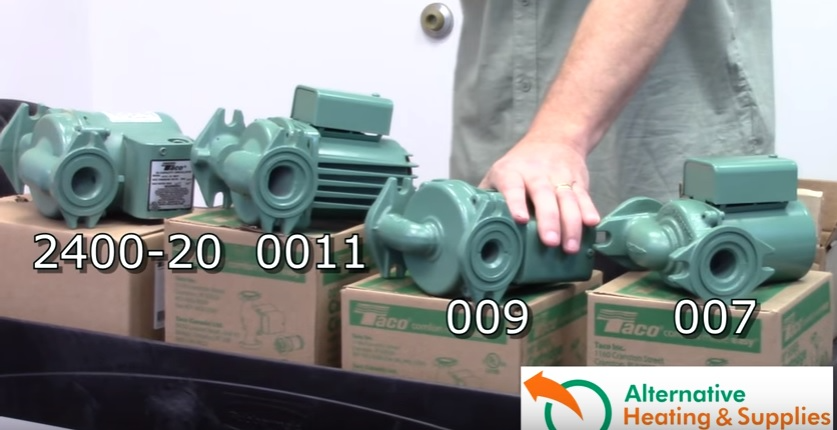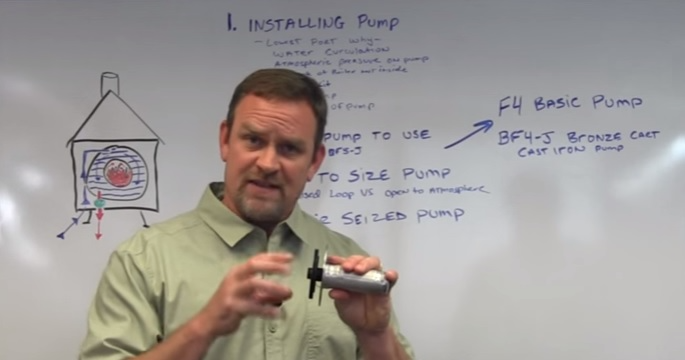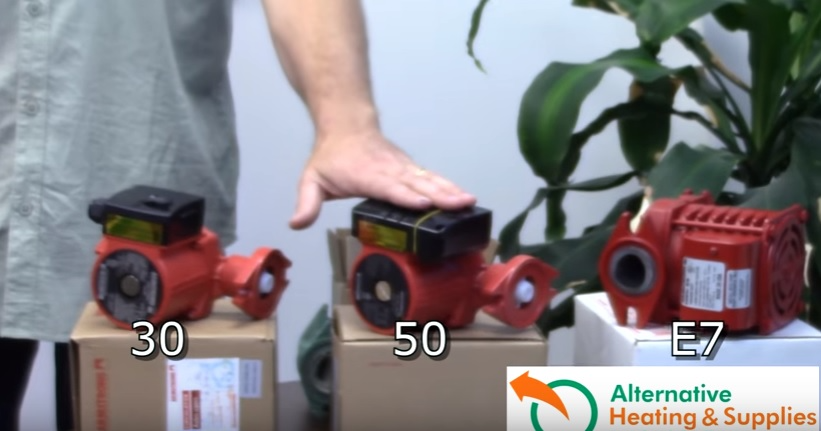How To Size a Pump for Your Outdoor Wood Boiler System
Posted by SEBASTIAN ZOTA
This is another Alternative Heating & Supplies episode and in this blog post we are going to talk about what pump to use for your wood boiler, and how to size your pump for your application.
Wood Boiler Pump Sizing Tips
Are you wondering what pump to use, what the difference between the pumps and what nomenclature they have, or how to size a pump for your application?
At Alternative Heating & Supplies, we get a lot of questions like these and I'm gonna try to sum it up for you so that you can make an educated guess. I will try basically to teach you what I do in 95% of the case when I am sizing pumps for my customers but keep in mind that there's more to it than just what I'm gonna give you here.
I've been doing this for 14 years sizing pumps, and I know what questions to ask and variables to ask. For example, what heat exchangers and how many bends, and turns, and resistance are in your system, but I'm gonna try to generalize this for you and try to make it a little more simplified for you.
What Pump To Use for a Wood Boiler?
As you probably know, Taco carries, and I carry four main pumps for Taco. These pumps are all BF4 or BF5-Js.

Taco Pumps Differences
What Is the Difference Between Taco 007 and Other Types of Taco Pumps?
Now, a lot of people, what's the different fee between the Taco 007 and 009, the 0011, and the 2400-20 with the J? What is the BF5-J? It's a very simple question.
Most of the pumps that you will see out when you're shopping to buy a pump are like a Taco 009-BF4. The BF4 is the basic generic run-of-the-mill Taco 009. The Taco 009-BF5-J, the difference is it has a bronze cartridge inside of it.
The Bronze Cartridge Pump

Taco 009-BF5-J
The bronze cartridge inside of it is all the bearings and everything inside of it are made out of stainless steel, so they do not corrode or get into the water system of a brass pump or stainless steel pump.
The reason why we want this in the wood boiler application is that since the bearings are made out of stainless steel that simply and anything that's in this system is not gonna rust or corrode. As we all know what these other wood boilers, the environment that they're in and the water, and the scale, and rust that they do generate, we try to battle it, but they're still in there. The cartridge will bind up in it and start to corrode any of the steel elements that are not in a bronze cartridge, and it will seize the pump prematurely.
Okay. So that is a fundamental difference between the BF4 and the BF5-J pumps. And the reason we use these is that they have much better life expectancy on the back of your boiler.
What Is the Difference Between Armstrong 30 and Other Types of Armstrong Pumps?

Armstrong Pumps
This is good for the equivalent of the Taco 007, 0 to 50 feet, and they're also three speed, so that's a nice option.
Taco 007 and Armstrong 30 pump the same amount of water volume when this is on high. So everybody's like, "Oh, I get more speed!”, but it’s not like that. The speed is on high-speed, that's what the pumps maxed out at, so you are losing water circulation. But it is a nice feature, like if you're using radiant or any other feature where you think you wanna slow down the water flow.
The Armstrong 50 is up to 50-100 Head Feet. It is a great little pump, great on efficiency, and actually, the Armstrong's are actually a little bit better than the Tacos on efficiency.
The E7, E8 and E9, those will take you up to the 100, 200, 300, maybe a little more Head Feets. These are more expensive, they also have a 1% failure rate, fantastic pump, good durability, also one year warranty.
Tips for Choosing a Boiler Pump
The pump is important as if your pump fails, you got no heat. So don't spend and go out and buy yourself a cheap pump because when that pump goes down, you're down, and that means you're not heating.
So buy yourself a good quality pump, take care of it. And check-out the next chapter, when I'm gonna talk about it a C's pump. When you turn off your pump for a long period of time, the cartridge sticks a little bit, I'll be talking about that in Chapter 3.
Pump Sizing
How can a pump that came with a boiler be sized for either or? Use the pump and if it works, it’s great, but if not, just put it on the shelf and get the right size pump.
Closed Loop Pressurized System and Atmospheric Loop
And also you need 8 to 10 gallons of circulation through your loop. How you do that and how you size that? It's a little bit more difficult because everybody uses the charts that Taco or Armstrong put out. Those charts are based on a closed loop pressurized system.
We are not running in a closed loop pressurized system, we are an open atmospheric loop. We are closed, but we're in an open atmospheric loop so we don't have equal pressures on the back and the front side of the pumps.
Pumps Sizes and Capacities
The Taco 007-BF5-J is what I recommend if your stove to your whole entire loop is from 0 to 50 feet.
The Taco 009, I use in the areas of 30 to 125 feet, Taco 009-BF5-J.
The Taco 0011-BF4-J is I use for the bigger applications, and that's gonna work in areas of 100 to 200 feet. The whole loop from the house is 100, house back, 200 feet. That's how I'm sizing this.
The 2400-20 wood boiler pump is the first pump that has ever been made for the wood boiler application. It is designed not to have equal pressures in the front and the back side. This pump has a 3-year warranty because it's designed for the wood boiler application.
The rest of the pumps also have a 3-year warranty, but only in a pressurized closed loop environment, which we're not running if there on the back of a wood boiler, so in this case, I offer a 1-year warranty on these.
The 2400-20 wood boiler pump is good for 150 feet and up depending on your loop, 300, 400 feet, now you're pushing the effort of this one, you might need two of these, one on one side and one on the other side. One push, one pull back.
Thank you for listening to Chapter 2, check out the next video where I'm gonna be talking about fixing a seized pump.
